Contradictions in the Bible spark debates, inviting readers to uncover deeper meanings in its complex narratives.

Fallacies in the Bible
You've likely stumbled upon more contradictions in the Bible than there are stars in the night sky, sparking debates that have raged on for centuries.
As you navigate through ancient texts, you'll encounter perplexing discrepancies—from the creation accounts to the genealogies of Jesus, not to mention the varying accounts of the resurrection.
These inconsistencies have fueled endless discussions among scholars, theologians, and laypeople alike.
If you're intrigued by how these apparent fallacies might actually offer deeper insights into the complexity and richness of biblical literature, then you're on the brink of an enlightening journey.
What will you discover as you explore these ancient narratives further?
Key Takeaways
- Biblical narratives contain contradictions, such as differing creation accounts and resurrection stories.
- Genealogical discrepancies and debates on free will highlight complexities within the text.
- Interpretation and historical context significantly impact understanding of biblical messages.
- Conflicting views on topics like slavery demonstrate evolving interpretations and moral standards.
Contradictions in Creation Accounts

A critical examination reveals several inconsistencies between the creation accounts presented in Genesis chapters 1 and 2, posing challenges to a literal interpretation. When you delve into the specifics, two key aspects stand out: vegetation timing and light sources, both of which exhibit notable discrepancies.
Genesis 1 suggests a structured sequence where light is created on the first day, followed by the establishment of vegetation on the third day, prior to the creation of sun, moon, and stars on the fourth day. This sequence raises questions about the sources of light that facilitated photosynthesis and the subsequent growth of plants before the sun's creation. It implicitly suggests an alternative light source, yet this isn't explicitly addressed, leaving you to ponder the mechanisms of this early growth phase.
Conversely, Genesis 2 portrays a more fluid and less sequenced creation narrative. It implies the formation of Adam before any plant life, suggesting that vegetation was created after the creation of man, which directly contradicts the chronological order presented in Genesis 1. This inversion in the timing of vegetation's appearance disrupts the linear progression found in the first account and introduces a significant inconsistency.
These inconsistencies don't merely pose logistical questions concerning the feasibility of pre-sunlight vegetation or the chronological order of creation but also challenge the cohesion and reliability of the narrative when interpreted literally. For scholars and believers alike, reconciling these differences requires a nuanced understanding of the text, potentially viewing these accounts as complementary rather than contradictory, or interpreting them through a metaphorical rather than a literal lens.
Divergent Genealogies of Jesus
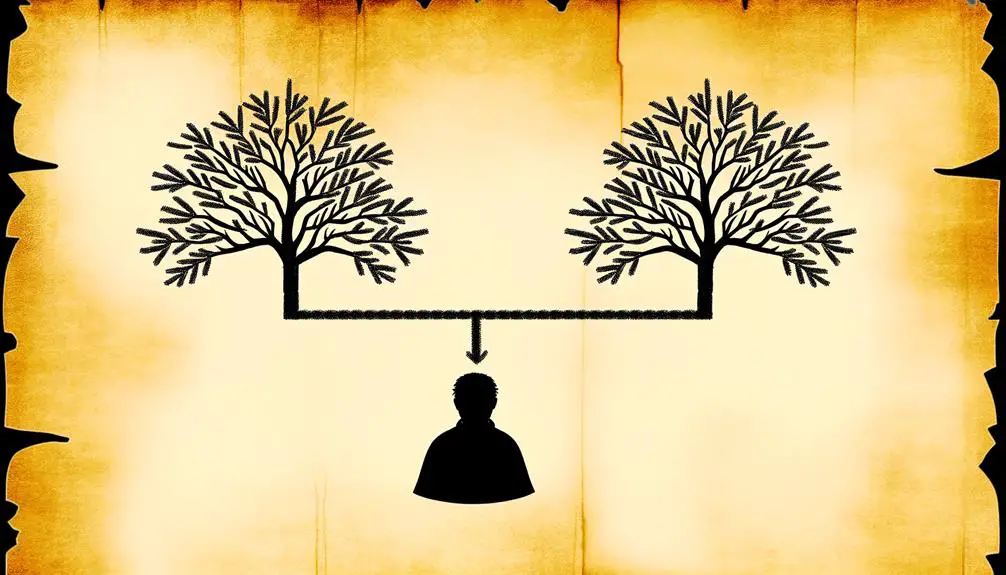
Moving from the complexities of creation, another area that invites scrutiny within biblical texts is the divergent genealogies of Jesus as presented in the Gospels of Matthew and Luke. You'll find, upon closer examination, that these two accounts offer differing paths through which Jesus is traced back to David, highlighting his royal lineage. This discrepancy has sparked considerable debate among scholars and believers alike, raising questions about the text's reliability and the intent behind these variations.
Matthew's genealogy is structured to underscore Jesus' role as the Jewish Messiah, aligning him within the royal lineage of David and then back to Abraham, emphasizing his rightful place in Jewish history. It's a meticulously crafted lineage that serves a clear narrative purpose, aiming to establish Jesus' legitimacy to a predominantly Jewish audience by linking him directly to key figures in Jewish tradition.
Luke's account, on the other hand, extends Jesus' lineage beyond Abraham to Adam, suggesting a more universal message. This genealogy isn't just about royal bloodlines but positions Jesus as the son of all humanity, emphasizing a message of salvation that's available to everyone, Jew and Gentile alike. The narrative purpose here is to highlight Jesus' connection to all people, underlining the inclusive nature of his mission.
The presence of these divergent genealogies in the Bible isn't merely a matter of conflicting data. Instead, they reflect the diverse theological aims and audiences of the Gospel writers. Understanding the narrative purpose behind each allows you to appreciate the complex layers of meaning the authors intended to convey, especially concerning Jesus' royal lineage and messianic claims.
The Issue of Free Will

ARTICLE TITLE: Fallacies in the Bible
PREVIOUS SUBTOPIC: 'Divergent Genealogies of Jesus'
CURRENT SUBTOPIC: 'The Issue of Free Will'
One of the most contentious debates in theological circles revolves around the concept of free will as depicted in the biblical narrative. This discussion sits at the heart of the determinism debate, raising crucial questions about human autonomy and moral responsibility. You'll find that the Bible presents a complex view that has led to various interpretations, often seen as contradictory by scholars and theologians alike.
The crux of the matter lies in whether individuals possess the autonomy to make choices independent of divine predestination. This leads directly to discussions about moral responsibility, as the existence of free will is fundamental to the accountability of one's actions.
Aspect |
Description |
|---|---|
Determinism |
Suggests that all events, including moral choices, are determined by previously existing causes. |
Free Will |
The ability to choose between different possible courses of action unimpeded. |
Analyses of biblical texts reveal that both concepts are present, which complicates interpretations. On one hand, scriptures suggest a predetermined plan by a sovereign deity. On the other, there's a clear emphasis on individual choice and the moral repercussions of those choices.
This duality raises significant questions about the nature of God's sovereignty and human freedom, challenging believers and skeptics to ponder the depth of moral responsibility in a world where divine will and human autonomy intersect.
Anachronisms in Historical Context

You encounter instances of anachronisms in the Bible when artifacts or terms are presented in a context that predates their actual historical emergence. These discrepancies, such as historical period mismatches, challenge the text's historical accuracy.
Analyzing these anachronisms provides insight into the compilation and transmission processes of biblical narratives.
Anachronistic Artifacts and Terms
In exploring the historical context of biblical narratives, it becomes evident that certain artifacts and terms represent anachronisms, or elements out of their proper time period, challenging the texts' historical accuracy. These anachronisms can significantly impact our understanding by suggesting a complex interplay of language evolution and cultural influences, which mightn't align with the purported timelines.
- Language Evolution: The use of certain phrases and words that, upon linguistic analysis, belong to periods much later than the events described.
- Cultural Influences: Artifacts or customs mentioned that align with cultures or civilizations that rose long after the biblical era.
- Technological Anomalies: Descriptions of technologies or practices that historical evidence suggests weren't yet invented or adopted in the time frame being described.
These elements invite a reevaluation of traditional interpretations, urging a more nuanced understanding of the text's origins and composition.
Historical Period Mismatches
Building on the discussion of anachronistic artifacts and terms, it's crucial to examine mismatches in historical periods that further question the Bible's chronological accuracy.
You'll find that geographical inaccuracies and the absence of archaeological evidence for certain events as described, highlight these mismatches.
For instance, cities mentioned as being visited or destroyed at specific times in biblical narratives often show no archaeological layer of destruction or even existence during those periods.
This discrepancy between the biblical timeline and archaeological findings suggests a complex relationship between the text and historical fact. Such anachronisms aren't merely oversights; they underscore the challenges in using the Bible as a historical document without considering the archaeological and historical context that sometimes contradicts its narratives.
Discrepancies in the Ten Commandments
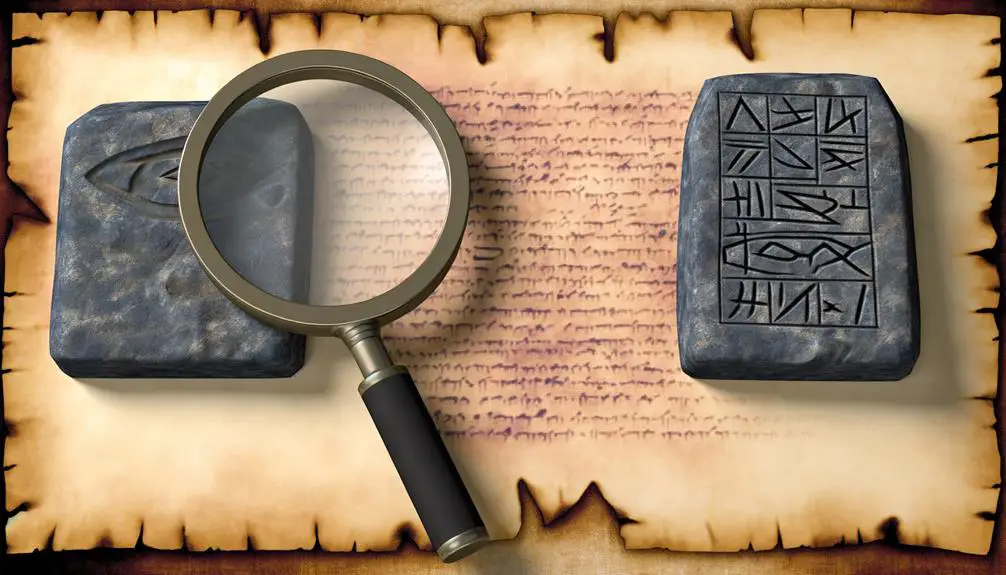
You'll find that the Ten Commandments, as central elements of Abrahamic religions, present notable discrepancies when scrutinizing their textual variations, interpretation differences, and the impact of historical context.
These disparities raise questions about the integrity and universality of these commandments, challenging traditional perceptions.
Commandments' Textual Variations
Delving into the heart of scriptural studies, one discovers that the Ten Commandments exhibit textual variations across different Biblical manuscripts, raising questions about their original formulation and interpretation.
- Commandment numbering: Different traditions divide and number the Ten Commandments in varied ways. This diversity reflects historical and theological nuances that impact the understanding of covenant symbolism.
- Covenant symbolism: The commandments serve as a cornerstone for the covenant between God and His people. Variations in texts may alter the perceived emphasis on specific aspects of this relationship.
- Textual variations: These discrepancies, ranging from minor linguistic differences to significant content alterations, challenge scholars to discern the most authentic version of these religious directives.
Analyzing these variations offers profound insights into the textual integrity and the evolving interpretation of these sacred texts.
Interpretation Differences
Having explored the textual variations in the Ten Commandments, it's crucial to examine how these differences influence their interpretation across various religious traditions. Language evolution and cultural interpretation play significant roles in how religious communities understand and apply these directives.
Religious Tradition |
Interpretation Focus |
|---|---|
Judaism |
Community obligations |
Christianity |
Individual morality |
Islam |
Guidance within Sharia |
This table highlights the diversity in focusing on the commandments, shaped by historical and cultural contexts. For instance, Judaism emphasizes communal well-being, Christianity often interprets them as guiding individual behavior, and Islam views them as part of a broader legal system. These discrepancies underscore the complexity of religious texts and the importance of considering cultural interpretation and language evolution in their analysis.
Historical Context Impact
Understanding the historical context is crucial in identifying the discrepancies present in the Ten Commandments across different religious texts. You'll find that these variations aren't merely editorial choices but are deeply rooted in the cultural influences and archaeological evidence of the time.
To convey a deeper meaning, consider these three points:
- Cultural influences shape how religious texts are interpreted and which versions of the Commandments are prioritized.
- Archaeological evidence suggests that the Commandments evolved over time, reflecting changes in societal norms and religious practices.
- Textual analysis reveals that discrepancies often stem from attempts to align religious teachings with the prevailing moral and legal standards of the time.
This analytical approach underscores the dynamic nature of religious texts, shaped by historical and cultural contexts.
Inconsistent Views on Slavery
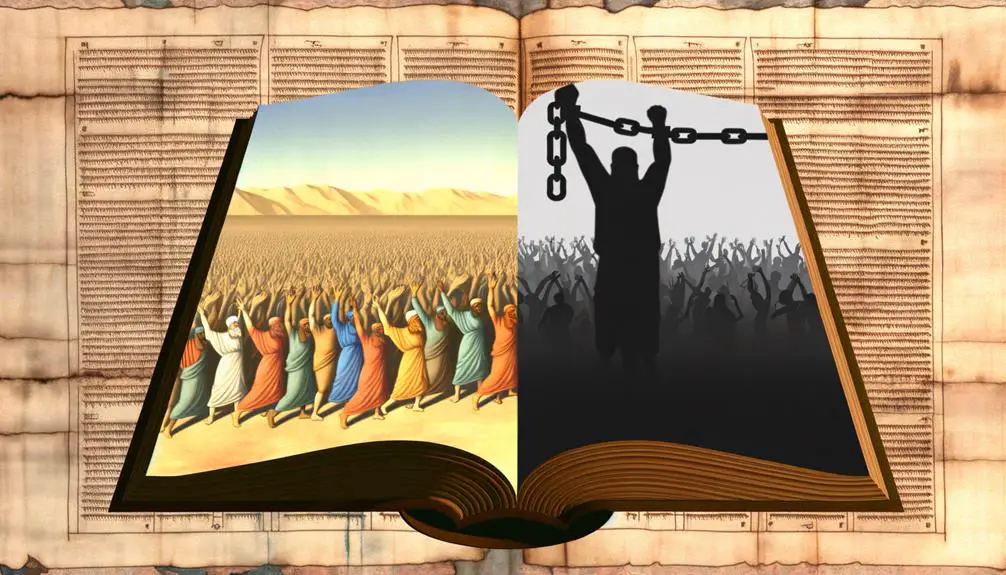
Throughout the Bible, there are passages that present seemingly contradictory stances on the issue of slavery, leading to diverse interpretations and discussions on this complex matter. On one hand, you'll find texts that appear to provide a moral justification for slavery, embedded within the cultural and economic contexts of the times. These passages often reflect the societal norms and economic dependency on slave labor prevalent in ancient civilizations. The Bible, in parts, seems to accept slavery as a given aspect of life, offering guidance on the treatment of slaves rather than outright condemning the institution itself.
On the other hand, there are scriptures emphasizing freedom, equality, and the inherent value of every individual, which can be interpreted as opposing the concept of slavery. These verses advocate for compassion, love, and justice, principles that seem fundamentally incompatible with the practice of owning another person. This dichotomy raises questions about the interpretation of scripture and the lens through which we view these ancient texts.
The juxtaposition of these viewpoints has fueled extensive theological debate. Scholars and believers alike grapple with reconciling these aspects, often looking to contextual, historical, and cultural analyses to understand the biblical perspective on slavery. Some argue that the Bible's approach to slavery reflects a pragmatic acceptance rather than an endorsement, suggesting a gradual path toward an ideal of universal freedom and dignity. Others see it as a reflection of the evolving moral and ethical standards of humanity, captured in the text over centuries.
Conflicting Accounts of the Resurrection
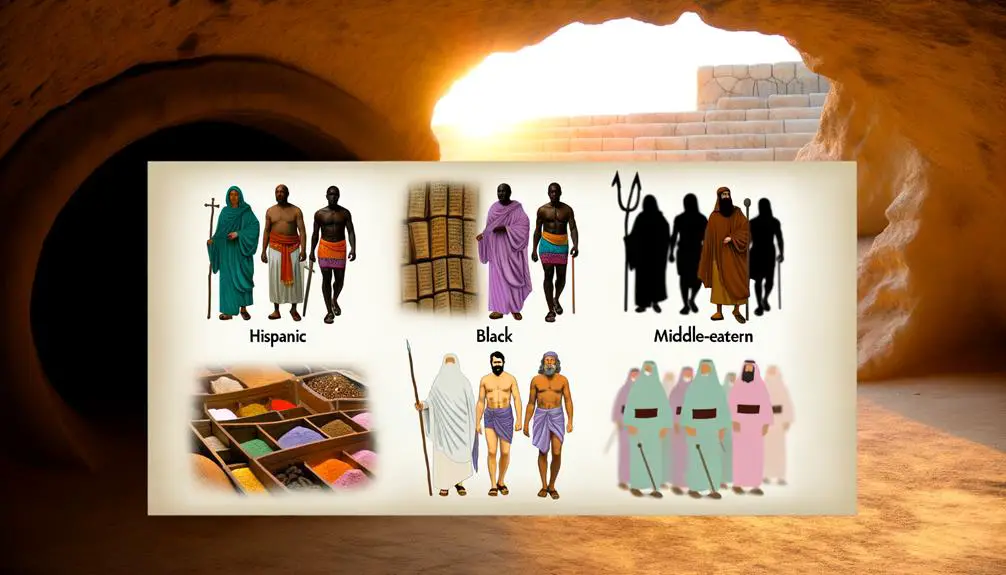
One of the most debated aspects within biblical scholarship concerns the varying accounts of the Resurrection, which present a complex challenge for theologians and historians alike. These discrepancies raise questions about factual accuracy and the interpretation of events surrounding one of Christianity's foundational moments. Key among these inconsistencies are the details regarding Mary's emotions and angelic appearances, which vary significantly across the different Gospel narratives.
- Mary's Emotions: The Gospels don't present a unified depiction of Mary Magdalene's emotional response upon discovering the empty tomb. Some accounts emphasize her sorrow and confusion, while others focus on her joy and belief. This variance in emotional portrayal complicates the understanding of her experience, leading to diverse interpretations of her role and significance in the events following Jesus' crucifixion.
- Angelic Appearances: The number, appearance, and messages of angels at the tomb also differ among the Gospels. While some mention a single angel, others refer to two, and the descriptions of their interactions with Mary and the other visitors vary. These discrepancies challenge the consistency of the narrative and raise questions about the nature of these angelic messages and their implications for the understanding of the Resurrection.
- Implications for Theological Interpretation: These conflicting accounts compel scholars and believers to engage in deeper theological reflection. They must consider the implications of these discrepancies for the core message of the Resurrection and its significance within Christian faith and doctrine.
Analyzing these variations requires a careful and scholarly approach, acknowledging the complexity and depth of the biblical texts. It's essential to understand that these differences may not undermine the spiritual truth of the Resurrection but instead invite a richer, more nuanced interpretation.
Varied Descriptions of God

Similar to the complexities found in the Resurrection narratives, the Bible also presents varied descriptions of God, challenging readers to explore these differences in divine portrayal. At the heart of these differences is the tension between God's omnipotence and expressions of divine emotion. You'll find that in some passages, God is depicted as the all-powerful, unchanging creator of the universe, a being beyond human comprehension and limitations. This portrayal emphasizes God's omnipotence, showcasing a deity who commands the forces of nature, dictates the course of history, and possesses foreknowledge of all events.
Conversely, other scriptural segments present a more nuanced view, highlighting God's interactions with humanity through a lens of divine emotion. You see a God who experiences anger, regret, love, and compassion. This depiction suggests a being who engages with the world on a more personal level, one who isn't only aware of human suffering but is also moved by it. Such portrayals can seem at odds with the concept of an omnipotent God, as they introduce vulnerabilities and emotions typically associated with human experience.
The varied descriptions of God in the Bible invite you to grapple with the complexities of divine nature. They challenge you to reconcile the transcendent aspects of God's omnipotence with the immanent qualities of divine emotion. This tension isn't easily resolved, but it enriches the biblical narrative, offering a multifaceted view of the divine that reflects the breadth of human experience and understanding.
Frequently Asked Questions
How Do the Fallacies in the Bible Impact Its Reliability as a Historical Document?
When evaluating the Bible's reliability as a historical document, you should consider archaeological evidence and cultural context. These aspects can clarify or challenge its historical accuracy.
If there are inaccuracies or contradictions, they don't automatically negate its value but invite deeper analysis. Understanding its origins and how societies have interpreted it over time enhances your grasp of its historical significance, despite any fallacies.
This balanced approach enriches your comprehension of its role in history.
What Role Do Translation Errors Play in the Creation of Apparent Fallacies Within the Bible?
Translation errors can significantly influence your understanding of ancient texts. When you're considering manuscript variations and how they've been interpreted over time, it's essential to recognize the role these errors play.
They're not just simple mistakes; they often reflect the cultural context of the translator. This means that what you're reading today might carry different meanings from its original text, potentially leading to misconceptions or altered interpretations of historical events and beliefs.
Are There Any Philosophical or Theological Explanations That Reconcile These Fallacies Without Undermining the Text's Spiritual Authority?
Navigating the sea of spiritual texts, you encounter Divine Mystery and Contextual Interpretation as lighthouses guiding you. These concepts help reconcile seeming contradictions, suggesting that what may appear as fallacies are instead layers of deeper truths.
How Do Different Denominations of Christianity Address and Interpret These Fallacies?
Different Christian denominations address interpretative challenges through ecumenical dialogues, emphasizing interpretative diversity.
You'll find that they often engage in deep theological discussions to reconcile differences and understand various perspectives.
These dialogues foster a richer understanding of scripture, allowing each denomination to uphold its spiritual authority while respecting others' interpretations.
This approach not only bridges gaps but also highlights the multifaceted nature of Christian theology and its teachings.
In What Ways Have These Fallacies Influenced Modern Secular and Religious Debates on Morality and Ethics?
When discussing morality and ethics in contemporary debates, you'll find that alleged fallacies have significantly shaped discussions, particularly around moral relativism and cultural influences. These discussions often pivot on how moral standards evolve, reflecting societal shifts rather than immutable truths.
This has led to a reevaluation of traditional ethical frameworks, encouraging a more nuanced understanding that accommodates diverse perspectives and challenges the universality of moral principles in both secular and religious realms.
Conclusion
Analyzing the Bible's text reveals inherent contradictions and anachronisms, from creation myths to the resurrection accounts. These discrepancies challenge the infallibility often attributed to this sacred text.
Remember, 'to err is human,' and the Bible, a product of human hands, is no exception. Its varied narratives on slavery, genealogies, and divine descriptions reflect the complex tapestry of human understanding and interpretation over millennia.
Acknowledging these fallacies invites a deeper, more nuanced engagement with the text's historical and spiritual layers.

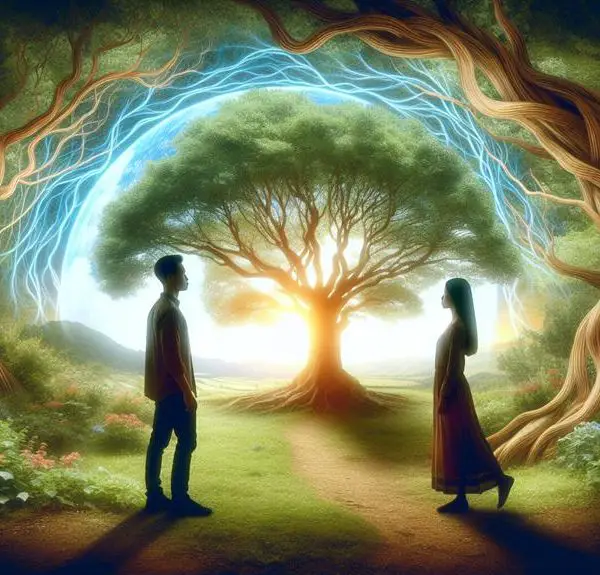

Sign up